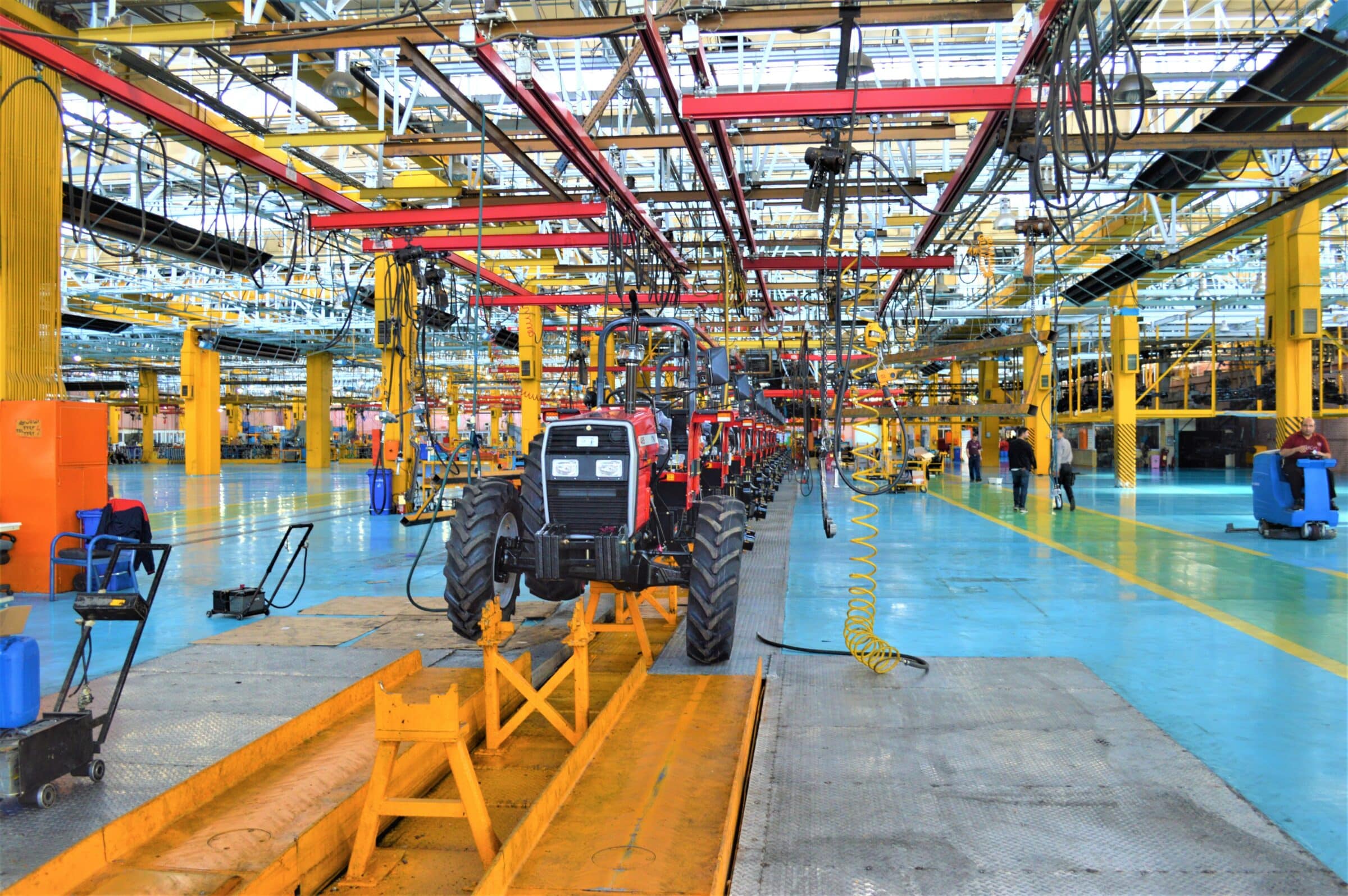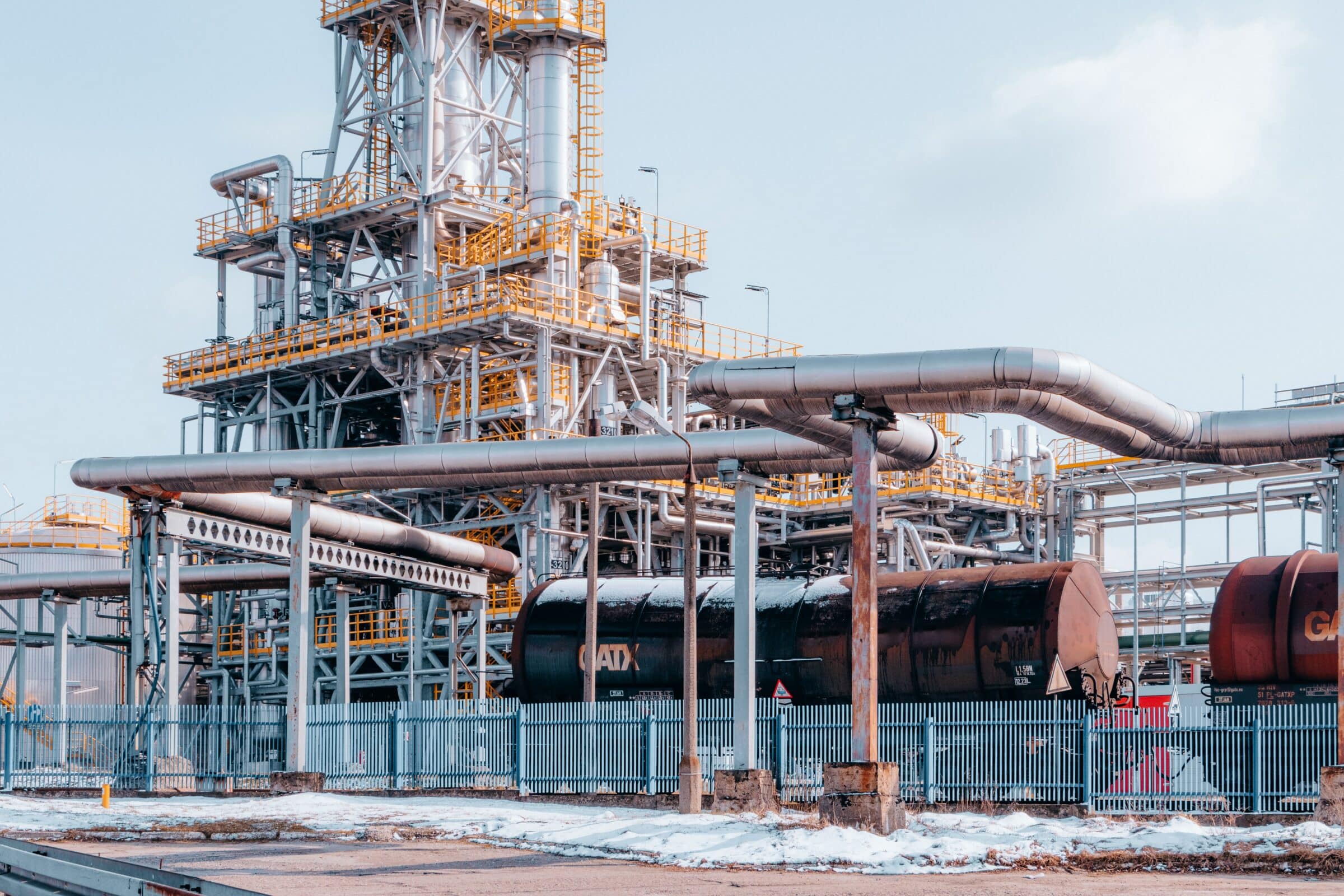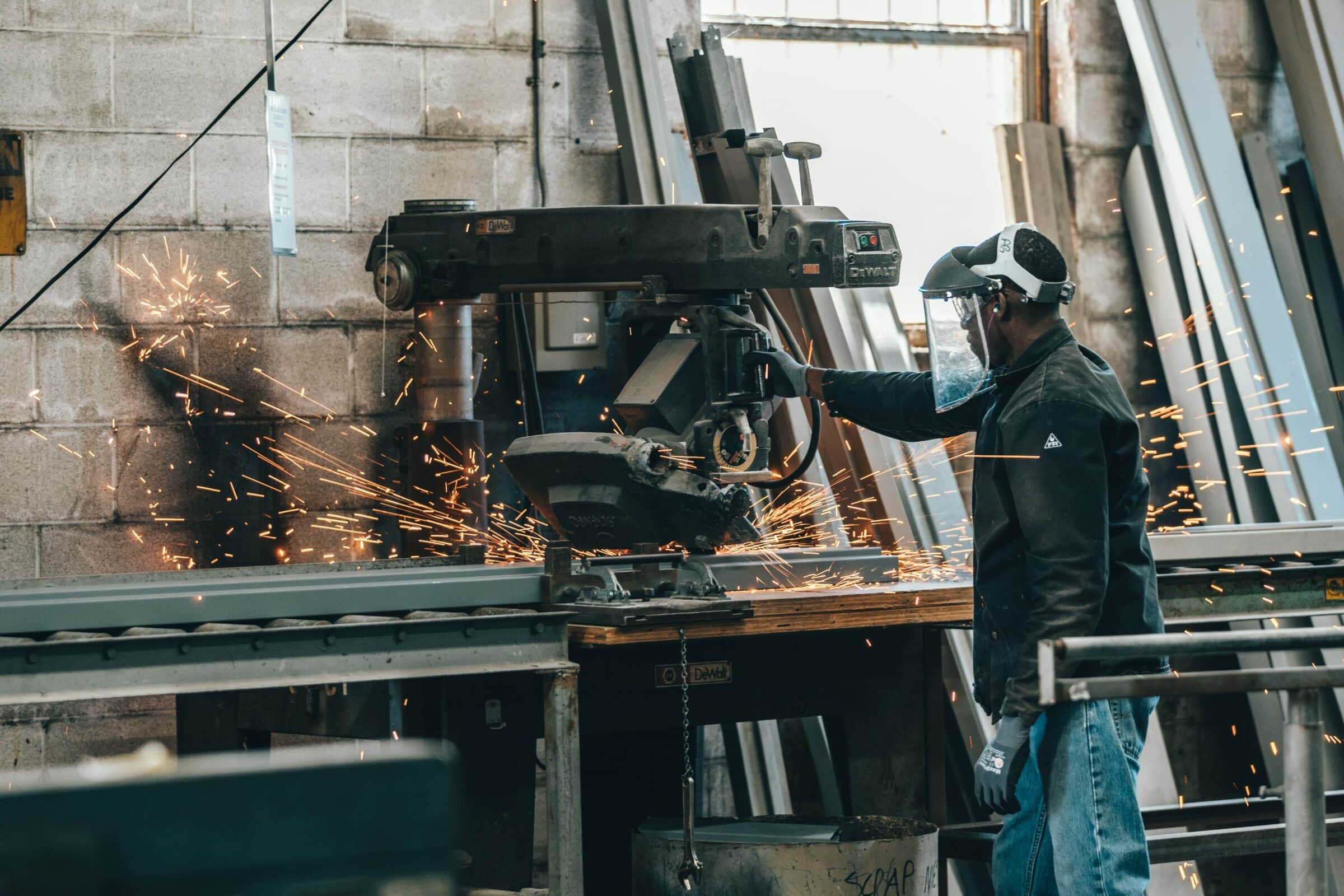In a world where globalisation is compelling manufacturers to enhance the efficiency of their production processes, the adoption of the Internet of Things (IoT) within factories is crucial. The application of Industrial IoT can benefit organisations in several ways, including a streamlined production process and improved asset management.
Discover how Industrial IoT technology is optimising production processes, enhancing efficiencies, and reducing costs across the manufacturing sector by reading this post.
What is Industrial IoT?
The integration of the Internet of Things in factories has become increasingly prevalent as manufacturers search for effective ways to improve their production processes and gain a competitive edge.
The Industrial IoT (IIoT) is a novel technological trend that utilises interconnected devices, sensors, software, and networks to create a data-driven ecosystem. This intelligent ecosystem enables organisations to gather and analyse real-time data, allowing them to make informed decisions and optimise their operations.
Key Industrial IoT figures:
- IIoT market is estimated to grow to $53.8 billion in 2025 (from $33.2 billion in 2020)
- 90% of manufacturers believe that there will be more long-term benefits than risks from digitising the production process.
- 58% of manufacturers believe that IoT plays a vital part in transforming operations to become more digital.
- $40B is spent each year on IoT within the Manufacturing, Utilities, and Transportation & Logistics industries.
- In a recent survey, 61% of respondents believe that IoT can be used to evolve industrial and manufacturing services.
Why is Industrial IoT important?
Before looking at how IIoT is applied within the manufacturing industry, let’s first consider why this advancing technology is important.
The implementation of industrial IoT solutions plays a major part in reducing the costs of operations and improving the quality of products. Since IoT sensors can capture data on certain product specifications and other metrics, manufacturers can determine which products meet quality standards much faster and with ease.
Through this process, customer satisfaction will also increase as there is less possibility for defective products to be sold on the market, in turn helping to build long-lasting trust with consumers.
This same technology can be used to predict early malfunctions and massively reduce unplanned downtime. It has been reported that 82% of companies have experienced unplanned downtime within the last three years, costing the industry an estimated $50 billion a year. By utilising technology that ensures reliable connectivity and maximum uptime, the industrial industry can significantly reduce this cost and improve its bottom line.
With IIoT, the potential for collaboration between machines, humans, and systems is also significantly increased. The technology enables real-time data sharing and analysis, allowing for quicker informed decision-making processes, increased automation, and ultimately improved efficiencies. This same technology also allows for improved asset management and enhanced production planning and scheduling throughout the factory and at each stage of the manufacturing process.
Through streamlining the production process, manufacturers can also reduce waste and lower their carbon footprint, making IIoT not only a financial benefit but also an environmental one.
Lastly, the use of IoT in factories can create a much safer working environment for employees. By connecting wearable devices and sensors to machinery, companies can monitor worker safety and take preventive action before injuries occur. Additionally, the automation of certain processes can eliminate the need for workers to perform hazardous tasks.
Industrial IoT applications
Now we have established the importance of IoT in factories, it’s time to explore some specific use cases where it can be applied. Below are nine key Industrial IoT applications that are transforming the manufacturing industry:
1) Logistics management
Industrial IoT has revolutionised logistics management by providing real-time visibility, analytics, and automation to the entire supply chain operations.
Through the integration of IoT-enabled sensors, GPS technology, and RFID tags, manufacturers can track the location, movement, and condition of goods and equipment throughout their facilities and across global networks. For example, Amazon use bots and lockers to increase delivery convenience all while making a profit, allowing the manufacturers to reduce overall shipping costs.
IoT technology also allows for intelligent route optimisation and precise delivery time predictions, reducing transportation costs and environmental impact.
Furthermore, connected devices can monitor warehouse conditions, such as temperature and humidity, ensuring the safe storage and transportation of sensitive products.
It has also been estimated that the implementation of IoT in logistics management can result in a 15-20% reduction in maintenance and repair costs, offering significant cost savings and competitive advantages for manufacturers in an increasingly globalised market.
2) Remote monitoring
Remote monitoring is a significant use case of Industrial IoT, enabling manufacturers to oversee and control their assets and processes from any location worldwide. This technology equips organisations with the ability to collect real-time data from their equipment, including parameters such as temperature, pressure, vibration, and energy consumption.
By having access to this information, companies can proactively identify potential issues and address them before they escalate, thus avoiding costly downtime and prolonging the life of their assets. For instance, a study by the American Society for Quality found that 82% of manufacturing organisations using IoT for remote monitoring witnessed better efficiency and lower defects in their production lines, resulting in both financial and environmental benefits.
Moreover, IoT-based remote monitoring systems facilitate seamless collaboration amongst geographically dispersed teams, leading to better decision-making and increased operational efficiency. Through machine learning algorithms and predictive analytics, these systems can also offer valuable insights to optimise processes and enhance overall performance.
In summary, by leveraging remote monitoring, manufacturers can harness the power of IIoT to expand their control over their operations, drive greater productivity, and reduce costs, all while maintaining safety and quality standards.
3) Improved security and privacy
Due to required authentication being a critical aspect of any IoT operation, factories can significantly increase the security and privacy of their operations with ease when utilising IIoT.
Manufacturers can monitor their premises in real time by employing smart cameras, sensors, and advanced authentication systems, preventing unauthorised access, theft, and potential accidents.
Furthermore, industrial IoT can encrypt and protect sensitive data as it is transmitted between devices and systems, thus mitigating the risk of data breaches, and ensuring strict compliance with privacy regulations.
With the growing complexity of cyber threats, the IIoT security market is projected to reach $27.57 billion by 2028. By incorporating robust security measures, industrial IoT enables manufacturers to create a secure and trusted environment that safeguards both their proprietary information and the safety of their personnel.
4) Manufacturing KPIs
Industrial IoT plays a crucial role in tracking and optimising manufacturing Key Performance Indicators (KPIs), providing manufacturers with granular data that enables them to constantly refine and improve their processes.
By implementing IoT devices and sensors throughout the production cycle, companies can gather real-time data on important KPIs, such as Overall Equipment Effectiveness (OEE), energy consumption, and production rate.
In fact, a report by the MPI Group found that manufacturers who utilise IoT technology cite increased production capacity as the most significant benefit (https://www.sciencedirect.com/science/article/pii/S095965262032922X, 2020).
Furthermore, IoT technology aids in developing a comprehensive understanding of performance metrics like yield rate, scrap rate, and quality. These data-driven insights gathered from IoT-enabled systems improve accuracy in resource planning and empower strategic decision-making.
As a result, manufacturers can accurately identify inefficiencies and swiftly implement corrective measures, boosting productivity and reducing waste.
By harnessing the power of Industrial IoT, organisations can effectively monitor and analyse their manufacturing KPIs, granting them the ability to drive sustainable growth, enhance product quality, and remain competitive in an increasingly digitalised global market.
5) Digital twinning
Digital twinning is another prominent use case for Industrial IoT, and it holds immense potential in revolutionising the manufacturing sector.
A digital twin is essentially a virtual replica of a physical asset, process, or system, which enables manufacturers to simulate, analyse, and optimise their operations in real-time. This innovative technology relies on the seamless amalgamation of IoT-enabled sensors, artificial intelligence, machine learning, and advanced analytics to collect and evaluate continuous data streams from the factory floor.
According to a report by Gartner, the digital twin market is projected to reach a staggering $35.8 billion in value by 2025, reflecting its immense potential and widespread adoption across industries. Digital twinning not only aids in reducing costs and downtime associated with equipment maintenance, but it also empowers manufacturers to enhance their product design processes, eliminate inefficiencies, improve overall quality, and readily adapt to changing market demands.
This advanced technology enables manufacturers to perform rigorous virtual tests, making it possible to pre-emptively identify flaws and issues in the production cycle or the final product without incurring significant costs. In essence, by leveraging digital twinning, manufacturers can harness the capabilities of Industrial IoT to improve their operational performance, drive innovation, and maintain a competitive edge in the dynamic, globalised marketplace.
6) Machine-to-machine automation
Machine-to-machine (M2M) automation is a crucial use case for Industrial IoT, signifying its transformative impact on the manufacturing sector.
Enabled by IoT technology, M2M automation facilitates seamless communication and interconnectivity between various machines, equipment, and systems within a smart factory environment. This increased connectivity allows for a highly efficient and coordinated workflow, thereby enhancing overall productivity.
The data collected from M2M systems can be utilised to fine-tune and optimise production processes, reducing manual intervention and enabling organisations to quickly adapt to market changes.
Additionally, M2M automation can significantly minimise human error while carrying out complex tasks, leading to improved quality and a reduction in operational costs.
Hence, through the employment of M2M automation, manufacturers can harness the power of Industrial IoT to establish intelligent, connected, and highly efficient production facilities, making them even more competitive in the ever-evolving global market.
7) Enhanced employee safety
Enhanced employee safety is a critical use case for Industrial IoT, transforming the traditional factory environment by mitigating risks and creating a safer workspace for workers.
IoT-enabled wearable devices, such as smart helmets, glasses, and vests, facilitate real-time monitoring of employees’ health and well-being by tracking vital parameters like heart rate, body temperature, and fatigue levels.
Additionally, these wearables can provide instant alerts in case of hazardous conditions, such as toxic gas leaks, excessive noise, or extreme temperatures. IoT technology also enables advanced communication systems between machinery and employees, reducing the risk of accidents caused by human error or lack of awareness.
Predictive maintenance through IoT monitoring ensures that unsafe equipment is detected and replaced or repaired before accidents occur, significantly reducing workplace injuries.
Thus, the incorporation of Industrial IoT in enhancing employee safety not only ensures compliance with occupational health and safety regulations but also contributes to increased productivity, reduced downtime, and decreased liability costs, ultimately bolstering a company’s reputation and competitive advantage in the market.
8) Opportunity to optimise VR and AR
The incorporation of virtual reality (VR) and augmented reality (AR) technologies in the manufacturing sector presents an exciting opportunity for industrial IoT applications.
VR and AR systems leverage interconnected IoT sensors, devices, and data streams to create immersive, data-rich environments that can significantly enhance various aspects of the manufacturing process.
For instance, AR applications can overlay real-time performance data and in-depth analytics onto physical equipment, providing operators with valuable insights immediately and allowing for more informed decision-making.
These technologies can also greatly benefit employee training by simulating complex scenarios, improving worker skill retention, and reducing the learning curve associated with new equipment and processes. Furthermore, VR and AR can be used in the maintenance and repair of machinery, guiding technicians with step-by-step instructions and offering remote expert support.
According to Statista, the AR and VR market in the industrial sector is expected to reach $52.05 billion by 2027, signifying the growing recognition of its value in driving productivity, efficiency, and innovation.
In summary, the use of VR and AR technologies, enabled by industrial IoT, presents a unique avenue for manufacturers to optimise their processes, enhance worker competency, and maintain a competitive edge in a rapidly evolving industry landscape.
9) Greater supply chain visibility
The last use case we want to touch on is the ability to gain greater supply chain visibility, traceability, and control.
With the integration of interconnected devices, sensors, and data analytics platforms, manufacturers can monitor and manage every aspect of their supply chains in real time. In return, the adoption of IoT solutions in supply chain management can significantly improve profitability, reducing costs and increasing efficiency within a factory.
Advanced IoT technologies, such as RFID tags, smart sensors, and GPS technology, allow manufacturers to monitor the location, status, and condition of their raw materials, components and finished goods throughout the entire procurement, production, and distribution process.
As a result, companies can rapidly identify and respond to any bottlenecks, inefficiencies, or disruptions, ensuring seamless and agile supply chain operations. Greater supply chain visibility through IoT also enables enhanced collaboration among suppliers, manufacturers, logistics providers, and end customers, facilitating better planning, forecasting, and decision-making.
Furthermore, an IoT-driven supply chain can ensure better traceability and ensure regulatory compliance, while simultaneously fostering environmental sustainability and ethical business practices. Ultimately, Industrial IoT is empowering manufacturers with greater supply chain visibility, leading to significant cost savings, improved operational efficiency, and a stronger competitive advantage in today’s ever-changing global market.
Stay connected with Caburn Telecom
Thank you for reading our post about IoT in factories.
The adoption of Industrial IoT solutions, such as those provided by Caburn Telecom, is revolutionising the manufacturing landscape by offering unparalleled benefits in terms of cost reduction, increased efficiency, and higher product quality.
Utilising Caburn Telecom’s advanced IoT connectivity solutions can help to optimise operations within factories, ensuring seamless logistics management and greater supply chain visibility.
As a company at the forefront of IoT technology, Caburn Telecom is committed to helping manufacturers stay ahead of the curve in an increasingly competitive global market. Discover more about our IoT solutions by contacting a member of our team today.




